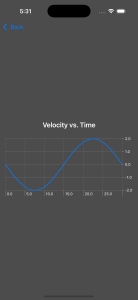After our work this week, we don’t have any notable risks on the software side, but we believe there may be some uncertainty with velocity calculations. Jason’s data reports a lot of drift, and while Meadow’s data does not, it has not been verified yet. Since this has been an area of concern from other sensor users, we suspected running trouble as well. We’re attempting to manage this risk by consulting sensor velocity documentation and pinpointing our issues through testing via serial plotter. Ensuring accurate velocity should not be too difficult, but we suspect keeping it that way is where things will become questionable. We will be keeping alert on ways to prolong its accuracy or tailor the time of a user’s lift to align with how long the velocity remains stable (but this is speculation).
Currently no changes have been made to the design.
Our overall schedule has not changed.






